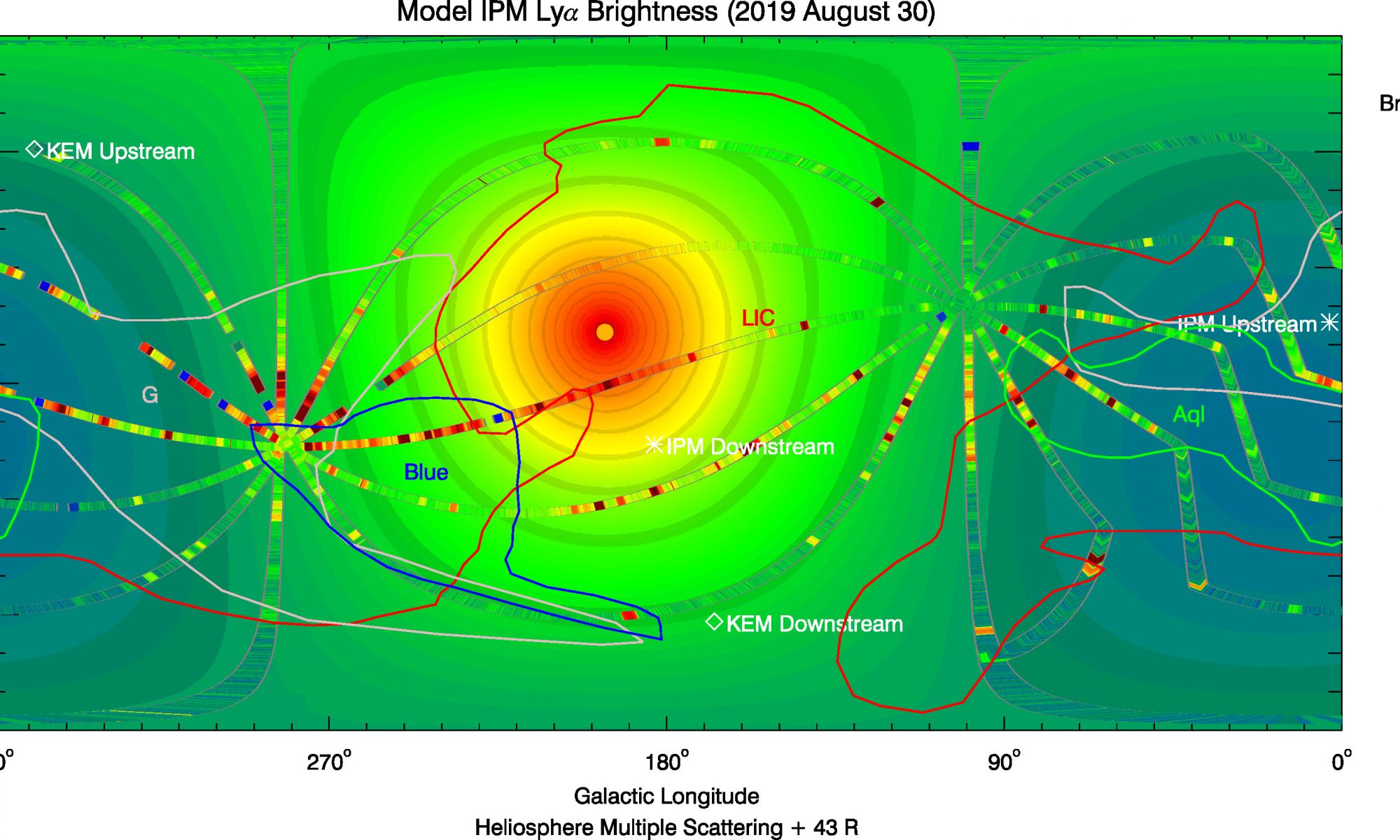The New Horizons spacecraft has been speeding away from Earth since it launched in 2006. Scientists using the Alice UV imaging spectrograph on board New Horizons, have been patiently but sporadically gathering data during those 15 years, but also waiting to get far enough away from the Sun to make a specific measurement: the brightness of the Lyman-alpha background of the Milky Way. Until now, this had never been measured accurately.
“The farther we moved away from the Sun, the less we were blinded by the solar component of the Lyman-alpha background,” said New Horizons team member Dr. Randy Gladstone, author of a new paper published in the Astronomical Journal. “This has been something that’s been guessed at by astronomers for decades. Now we have a much more precise number.”
Gladstone and his team used Alice to make the observations of the Lyman-alpha background (Ly?) several times during the mission: Three times during the cruise to Pluto, another observation just one month prior to the mission’s flyby of Pluto, as well as one day after, and five times since then, out to just over 47 au from the Sun.
What Alice found is that the galactic component of the Lyman-alpha background is about 20 times less bright than the Lyman-alpha background is near Earth.

The Lyman-alpha ultraviolet background was first detected in the 1960s, and until now, scientists have only been able to makes estimates of how pervasive it is – and these estimates have varied widely over the last 60 years.
The Lyman-alpha ultraviolet background glow permeates space and can be used to characterize the tenuous wind of hydrogen atoms which blows through our Solar System. Studying this wavelength of light – which is about four times shorter than what human eyes can see – allows astronomers to literally see in the dark. Observational cosmologists have been able to map out the distribution of matter in the universe, and an instrument similar to Alice on the Lunar Reconnaissance Orbiter called LAMP (Lyman Alpha Mapping Project) was used to image permanently dark craters near the north and south poles of the Moon.

In space, the galactic Lyman-alpha background comes from hot regions around massive stars which ionize all the matter near them, which is primarily hydrogen. Hydrogen atoms between the stars scatter these photons into a roughly uniform glow throughout space. But in most of our solar system, the background is dominated by Lyman-alpha photons emitted by the sun.
“The Lyman-alpha background has been studied a lot near the Earth’s orbit, and is bright enough that if we could see it, the night sky would never get darker than twilight,” Gladstone explained in a press release. “It’s so bright from solar Lyman-alpha that we weren’t certain how much the Milky Way galaxy contributed to its overall brightness. It’s like standing near a streetlamp on a foggy night. The fog scatters the lamp’s light, making it hard to see anything else.”
Out in the Kuiper Belt where New Horizons is traveling, the scattered sunlight component of the Lyman-alpha signal is far less bright and the fainter components from the nearby regions of the Milky Way become easier to distinguish. The team said in their paper that a more precise measurement will help astronomers better understand the nearby regions of the Milky Way galaxy.
“What a great resource New Horizons is,” said New Horizons principal investigator Alan Stern, “not just for the exploration of the Kuiper Belt, but also to understand more about our galaxy and even the universe beyond our galaxy through this and other observations by our scientific instrument payload.”
Lead image caption: This false-color map shows several scans of the Lyman-alpha background over the sky, obtained by the Alice ultraviolet spectrograph on the New Horizons spacecraft when it was 45 AU from the Sun. The data agrees well with an underlying model of the solar component of the Lyman-alpha background to which a constant brightness from the Milky Way has been added. The background is brighter at both directions near our Sun, which is marked here by an orange dot. Credit: SwRI

